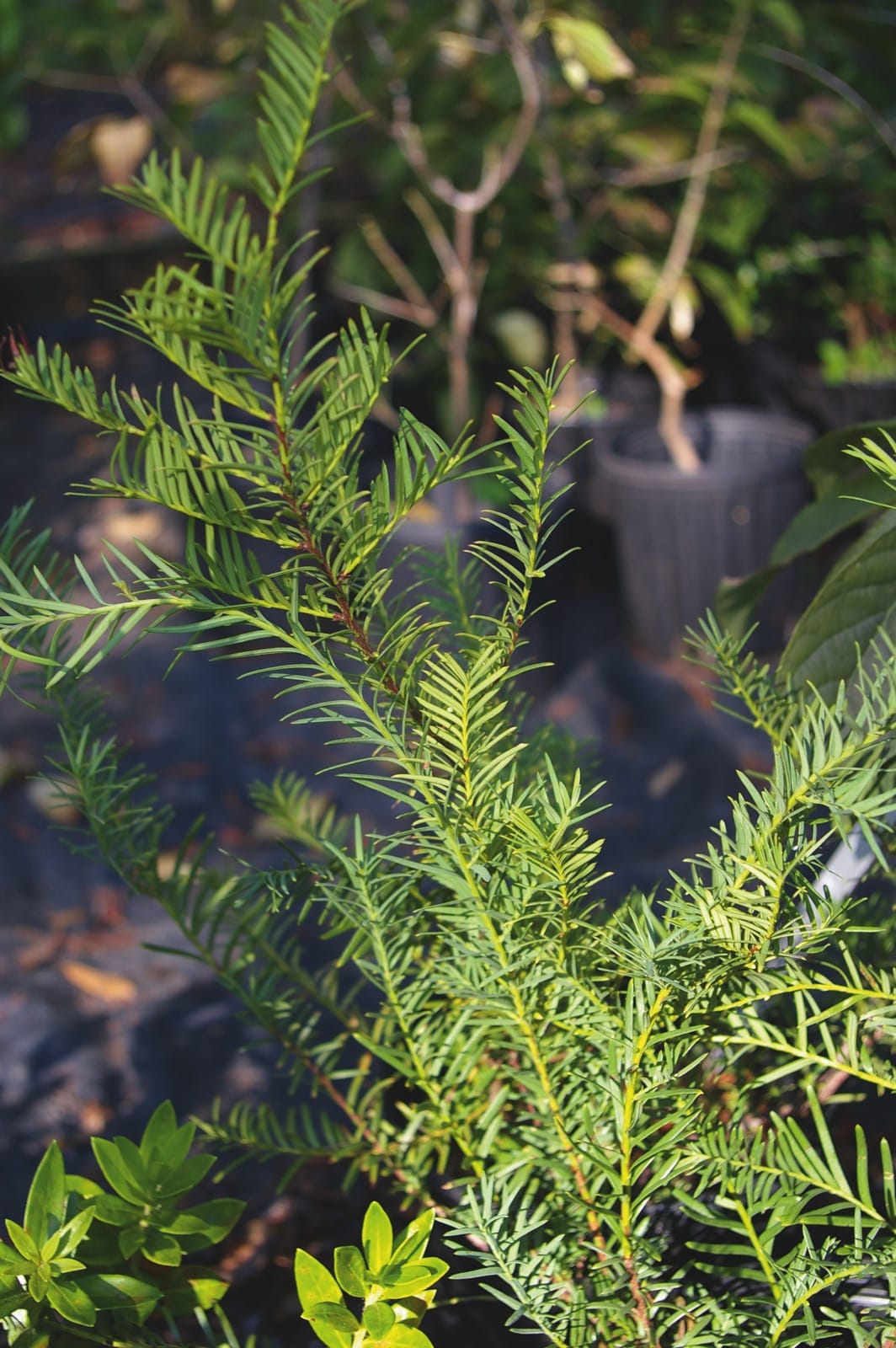Taxus floridana
Sponsor
Kindly sponsored by
This genus has been sponsored and new text is being prepared.
Credits
Article from New Trees by John Grimshaw & Ross Bayton
Recommended citation
'Taxus floridana' from the website Trees and Shrubs Online (treesandshrubsonline.
Genus
Common Names
- Florida Yew
Distribution USA: Florida. Habitat Moist, shaded valleys in broadleaved forest, between 15 and 30 m asl. USDA Hardiness Zone 7. Conservation status Critically Endangered. The Florida Yew exists only along the eastern side of the Apalachicola River, where it is threatened by fungal disease and the extraction of water from underground aquifers. Illustration Elias 1980; NT840. Cross-reference K291.
Despite its narrow natural range, where it is presumably a relict population related to T. globosa (see p. 841), the Florida Yew seems to be quite adaptable, and is found in collections throughout milder areas on both coasts of the United States. It grows outdoors at the Arnold Arboretum, though discolouring to brown in winter (R. Nicholson, pers. comm. 2008). It is considered to have potential for use in the southeastern states as a replacement in the landscape for T. baccata, T. cuspidata and T. ×media, which do not tolerate heat and humidity (Dirr 1998). In the United Kingdom it does well where grown; at the Hillier Gardens, for example, there is a respectable specimen of 4.2 m.

